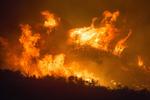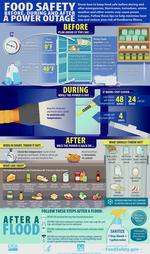Emergencies & Food Safety
Poisoning
Nov. 15, 2024 Revised.
Have a question about a possible poisoning?
The American Association of Poison Control Center offers fast, free, expert services, 24/7 through the Poison Help Hotline: 1-800-222-1222 and
online self-triage tool: PoisonHelp.org.
Save this information somewhere that you can retrieve quickly, if needed.
Note: Fresh fruits and vegetables should be washed by rinsing with running water.
Symptoms of botulism usually start with weakness of the muscles that control the eyes, face, mouth, and throat. This weakness may spread to the neck, arms, torso, and legs. Botulism also can weaken the muscles involved in breathing, which can lead to difficulty breathing and even death.
Many cases of botulism are preventable.
Foodborne botulism is caused by eating foods that are contaminated with the disease-causing toxin. You cannot see, smell, or taste botulinum toxin – but taking even a small taste of food containing this toxin can be deadly. Contamination can happen when food is handled improperly when it is made, when it is stored, or when it is used by consumers. The best way to prevent foodborne botulism is by carefully following instructions as recommended by the U.S. Department of Agriculture in the USDA Complete Guide to Home Canning. More (and current) information on home canning: National Center for Home Food Preservation and state and county extension services. [Orange County, California Master Food Preserver Helpline]
Do not eat food if you do not know whether safe canning guidelines were followed. Throw it out!
From interview with UC Cooperative Extension Specialist in Microbial Food Safety, Linda Harris
Botulism Q&A
Power Outages & Disasters
Are you and your food prepared?
Learn what you can do to keep your food safe before a power outage, disaster or other emergency occurs.
Find out about California Public Safety Power Shutoffs (UCANR Safety Note #199).
Read Food Safety in Disaster or Emergency (FoodSafety.gov)This page details what to do Before, During and After a disaster or emergency. Here's an outline of what you'll find on the page.
- Before a Disaster or Emergency
- Prepare and Emergency Food Supply - you should have a 3-day supply of food on hand and know how to store it.
- Prepare an Emergency Water Supply - you should store at least 1 gallon of water per day for each person and each pet, and store at least a 3-day supply of water for each person and each pet.
- Prepare for a power outage.
- During a Disaster or Emergency
- If the power goes out, what to do to keep food safe.
- After a Disaster or Emergency
- Determine which food is safe and what food should be discarded after a power outage or flood
- How to salvage commercially prepared food
More on how to Keep Your Food Safe During Emergencies (USDA FSIS Food Safety Education).

Food Safety in Emergencies (UC Davis, UC Food Safety) provides additional sources for general information and resources specifically for earthquakes, fires (household and wildfires), floods, power outages. There are also some Información En Espanol.


